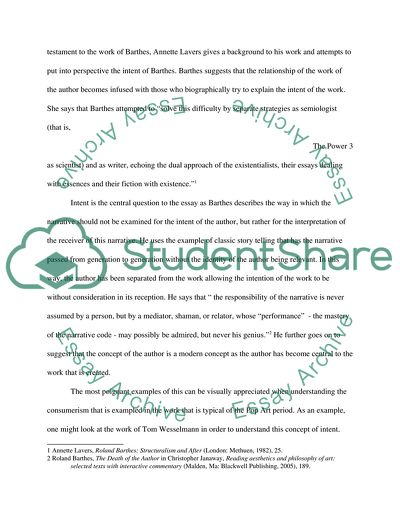Cite this document
(“Roland Barthes, The Death of the Author Essay Example | Topics and Well Written Essays - 1750 words”, n.d.)
Retrieved from https://studentshare.org/literature/1562487-roland-barthes-the-death-of-the-author
Retrieved from https://studentshare.org/literature/1562487-roland-barthes-the-death-of-the-author
(Roland Barthes, The Death of the Author Essay Example | Topics and Well Written Essays - 1750 Words)
https://studentshare.org/literature/1562487-roland-barthes-the-death-of-the-author.
https://studentshare.org/literature/1562487-roland-barthes-the-death-of-the-author.
“Roland Barthes, The Death of the Author Essay Example | Topics and Well Written Essays - 1750 Words”, n.d. https://studentshare.org/literature/1562487-roland-barthes-the-death-of-the-author.


